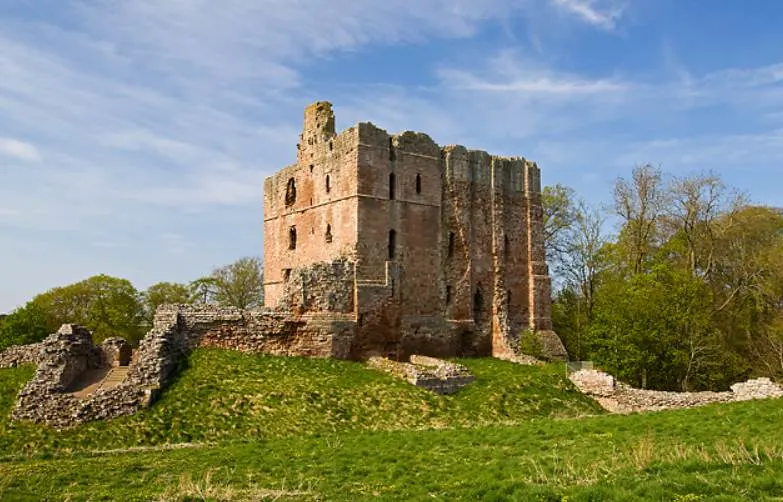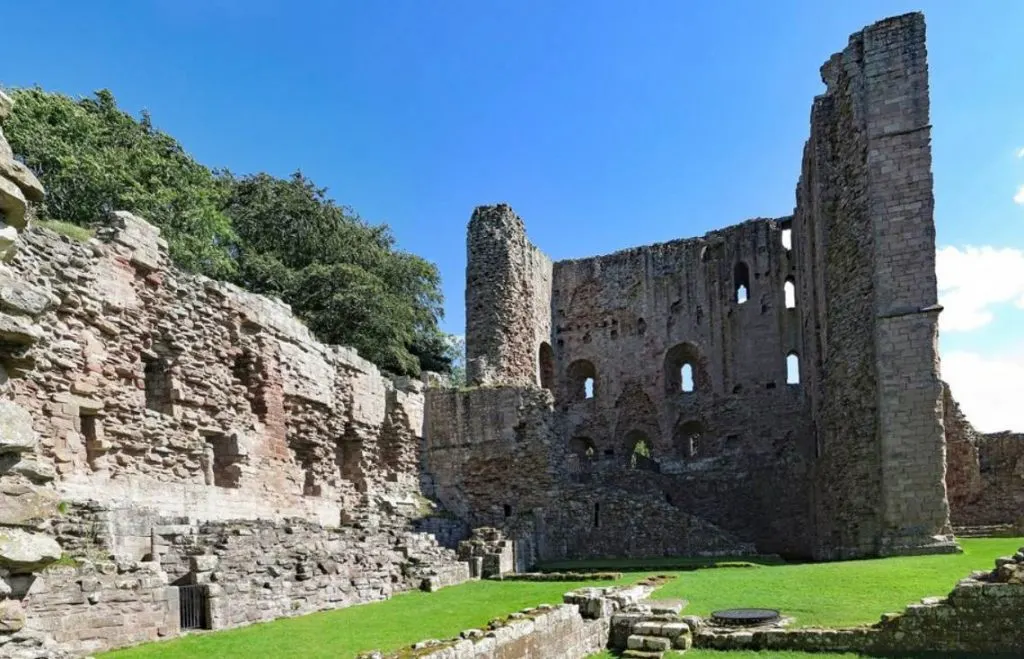One of the most picturesque castles in England has historically been one of the most important strongholds on the border between England and Scotland.
Because it saw quite some action during the numerous conflicts between the English and Scottish, it’s far from being in mint condition today.
Regardless of this notion, it’s still a popular tourist attraction in the region, and in this article, you’ll discover some of the most interesting facts about Norham Castle.
1. It’s located in the utmost northeastern corner of England
Norham Castle is located just east of the town with the same name in the county of Northumberland in the north of England.
The caste was constructed on an elevated position and overlooks the river Tweed which forms the border between England and Scotland in this area.
This part of England has been historically important for quite some time, starting with Hadrian’s Wall during the Roman occupation of Britain and the castles that were constructed here as strongholds.
Other castles in the area are located along the coastline and are Lindisfarne Castle on Holy Island, Bamburgh Castle, and Alnwick Castle.

2. The castle has a violent history that dates back to the early 12th century
Being located in such a strategic position made it one of the key fortresses during the many ars between the English and the Scottish.
The castle was constructed by the Bishop of Durham in 1121 to protect the region from invasions of the Scots.

He was a man named Ranulf Flambard (1060-1128), the son of a priest in the town of Bayeux, Normandy, after which the famous Bayeux Tapestry was named.
He was a close associate and minister of King William II, the third son of William the Conqueror who initiated the Norman Conquest of England in 1066.

3. The castle managed to withstand 3 sieges in the early 14th century
The original version of the castle wasn’t as good in protecting from Scottish invasions as initially conceived. It was captured less than 2 decades after its completion by King David I of Scotland in 1136.
The castle was completely rebuilt when the Scots were driven out and strengthened tremendously between 1153 and 1195.
The Scots besieged the castle 3 times in the early 14th century. A year-long siege in 1318 and a seven-month-long siege in 1318 ended unsuccessfully, and an attempt in 1322 ended the same.
These events are a testament to how difficult it was to break the strong fortifications of the castle during the Middle Ages.

4. The castle was shelled by an enormous gun in the late 15th century
The Wars of the Roses (1455–1487) was a period of tremendous turmoil in England and the castle saw quite some action during this period. The Yorkists managed to hold onto the castle during this period.
The castle was strengthened following this war. These new defenses were heavily attacked by the Scots who used enormous canons in an attempt to breach the walls.
One of these cannons is called the “Mons Meg” which has a barrel diameter of 51 centimeters (20 inches). This enormous cannon is now present at Edinburgh Castle.

5. The destroyed castle saw its final action in the 16th century
James IV of Scotland (1473-1513) invaded England in the early 16th century and hammered the castle once more with heavy artillery in 1513.
Most of the outer walls of the castle were destroyed and the English had to surrender the castle to the Scots.
It remained in Scottish hands until the Scottish King died later that year during the Battle of Flodden. It was partially restored later that century and a garrison was housed here.
The castle didn’t see any action anymore and when Queen Elizabeth mentioned that she wouldn’t spend anything on the castle, it started falling into ruin.

6. The fortified gate of the castle has a special name
The state of the castle today isn’t much different as it has been for several centuries. It still features some elements of what were once amazing defenses.
The castle was built on the south bank of the River Tweed and is protected by a steep slope on that side. A ravine protected the east side and the south and west sides were protected by an artificial moat.
Further features of the castle were an inner and outer ward. Accessing the inner ward could only be done via a drawbridge and a fortified gate referred to as “Marmion’s Gate.”
When you see these features, you’ll understand why a year-long siege during the Middle Ages didn’t succeed as it’s virtually impossible to penetrate.

7. The 12th-century keep of the castle is quite a big building
The most prominent feature of the castle still partially stands today and possibly dates back to the 12th century.
The keep is an enormous structure that has dimensions of 25.6 x 18.3 meters (84 x 60 feet) and stands 26.8 meters (88 feet) tall.
One of the most amazing facts about Norham Castle is that some of the walls of this medieval keep were over 8.5 meters (28 feet) thick.
Adjoining the keep was the bishop’s hall, a structure that measured 8.3 x 9.1 meters (60 x 30 feet) but which is completely ruined today.

8. Norham Castle was the subject of several paintings by J.M.W. Turner
Like many medieval castles in England, Norham Castle became a source of inspiration for the Romantic artists and landscape painters of the late 18th and early 19th centuries.
One of the most prolific English artists, a man named Joseph Mallord William Turner (1775-1851) visited the castle in the 1790s and painted and engraved it several times throughout his career.
Turner’s paintings of the castle were bequeathed to the state following his death and multiple versions can now be admired at Tate Britain in London.

9. It’s an important building in English history
The architectural features of the castle that are still standing are still a testimony to what an impressive fortress this once was during the Middle Ages and beyond.
Because of this and tips important part in English history, it has been designated a Grade I listed building and a Scheduled Ancient Monument.
10. The castle is open and free to visit
Norham Castle is now managed by English Heritage and has become a popular tourist attraction in Northumberland.
If you want to explore medieval architecture and witness the impressive defenses of the castle firsthand, you can visit the castle free of charge throughout the year.
It’s open every day from April to September and every weekend from October to March.

